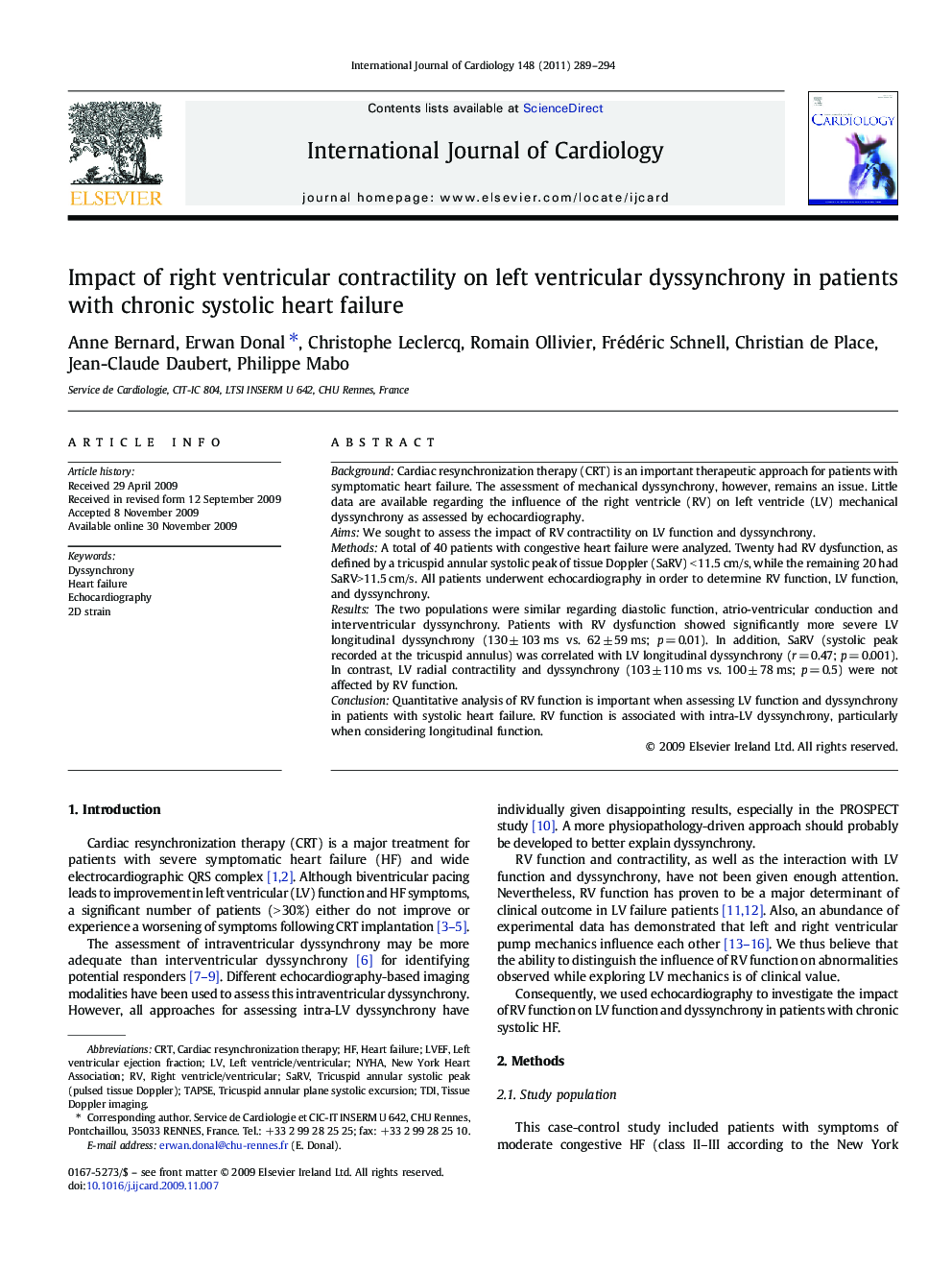| کد مقاله | کد نشریه | سال انتشار | مقاله انگلیسی | نسخه تمام متن |
|---|---|---|---|---|
| 2931120 | 1576277 | 2011 | 6 صفحه PDF | دانلود رایگان |

BackgroundCardiac resynchronization therapy (CRT) is an important therapeutic approach for patients with symptomatic heart failure. The assessment of mechanical dyssynchrony, however, remains an issue. Little data are available regarding the influence of the right ventricle (RV) on left ventricle (LV) mechanical dyssynchrony as assessed by echocardiography.AimsWe sought to assess the impact of RV contractility on LV function and dyssynchrony.MethodsA total of 40 patients with congestive heart failure were analyzed. Twenty had RV dysfunction, as defined by a tricuspid annular systolic peak of tissue Doppler (SaRV) < 11.5 cm/s, while the remaining 20 had SaRV>11.5 cm/s. All patients underwent echocardiography in order to determine RV function, LV function, and dyssynchrony.ResultsThe two populations were similar regarding diastolic function, atrio-ventricular conduction and interventricular dyssynchrony. Patients with RV dysfunction showed significantly more severe LV longitudinal dyssynchrony (130 ± 103 ms vs. 62 ± 59 ms; p = 0.01). In addition, SaRV (systolic peak recorded at the tricuspid annulus) was correlated with LV longitudinal dyssynchrony (r = 0.47; p = 0.001). In contrast, LV radial contractility and dyssynchrony (103 ± 110 ms vs. 100 ± 78 ms; p = 0.5) were not affected by RV function.ConclusionQuantitative analysis of RV function is important when assessing LV function and dyssynchrony in patients with systolic heart failure. RV function is associated with intra-LV dyssynchrony, particularly when considering longitudinal function.
Journal: International Journal of Cardiology - Volume 148, Issue 3, 5 May 2011, Pages 289–294